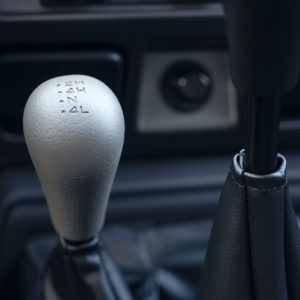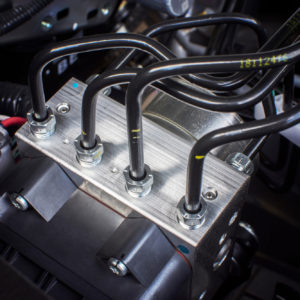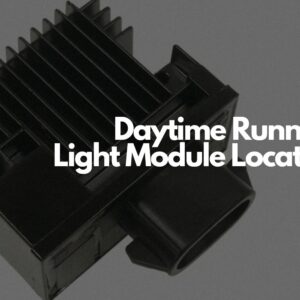The transfer case control module is one of the many computers in modern four-wheel drive (4WD) vehicles, especially the models manufactured by General Motors. But what is it? How is this computer related to the transfer case mentioned in its name? And what does the transfer case control module do in your vehicle?
What Does the Transfer Case Control Module Do?
The transfer case control module runs the 4WD drivetrain during typical driving profiles. It controls the process of shifting gears when the vehicle operates in 4WD mode.
While shifting between gears, the transfer case control module evaluates how fast your vehicle goes. It also looks at the transfer case mode, which is how the drivetrain operates. (Transfer cases can run in either two-wheel drive mode, 4WD with low-range mode, and 4WD with high-range mode.)
After the transfer case finishes shifting, the control module activates the transfer case encoder/actuator. It ensures that the transmission switches between high and low operating ranges as the drivetrain operates in 4WD mode.
Furthermore, the transfer case control module deactivates the front differential locking motor. It prevents differential locking, which forces the wheels to spin together at the same speed. Instead, the transfer case control module allows the wheels to rotate independently.
The transfer case control module activates the selector switch if the drivetrain can’t shift between operating modes. In some older GM vehicles, the switch has a light that flashes to warn you that something’s gone wrong with the 4WD system.
What Is a Transfer Case Control Module?
Think of the transfer case control module as the brain that runs the transfer case. It controls when the transfer case distributes the engine torque between the drive axles. It also allows the axle that isn’t acting as the drive axle to engage or not disengage, depending on what’s needed.

Where Is the Transfer Case Control Module Located?
The transfer case control module’s location varies between vehicle models. However, most modules are under the driver’s side dashboard, mounted on the steering column. The module must stay near the control panel, so putting it under the steering column panel works perfectly. The 1999-2002 GMC Sierras kept their transfer case control module in this location.
Remove the dashboard cover to access the transfer case control module. Usually, the computer faces you, making it easy to reach the connectors and disconnect the part for repair or replacement.
There are other possible locations for the transfer case control module. In some Chevrolet Colorado and GMC Canyon models, the module is under the driver’s seat. Depending on your size, you might need to remove the seat to reach the computer.
Symptoms of a Bad Transfer Case Control Module
The typical transfer case control module lasts throughout the vehicle’s entire service life. However, it can prematurely fail and need replacement. When the control module develops an issue, it will exhibit noticeable symptoms.
Common bad transfer case control module symptoms include the following:
Engine Hesitation
Believe it or not, a bad transfer case control module can cause the engine to hesitate despite successfully igniting the air-fuel mixture. This can happen because one of the sensors monitoring the transmission sent an inaccurate reading to the control module.
Gear Shifting Issues
A transfer case control module smoothly shifts between the 4WD’s high and low gear ranges to deliver the required torque to the drive axles. If the computer develops a problem, it can encounter more difficulty when shifting between the two gear ranges.
The specifics behind this problem can vary depending on your vehicle’s age. Older models use a body computer to regulate their transfer case’s operation. In comparison, most modern machines use electrical switches to change modes.
Aside from a bad transfer case control module, other possible reasons for gear shifting problems include damaged linkage, low fuel level, and an internal failure in the transfer case. Not every problem will stem from the same issue, so always run the appropriate tests.
Service 4WD Warning Light Switches On
Your vehicle’s dashboard has warning lights that trigger if something goes wrong with their associated system. For the 4WD system, it’s the service 4WD warning light.
If the transfer case control module or another 4WD part fails, the service 4WD warning light activates. It will turn off after you fix the problem.
If the vehicle lacks a warning light dedicated to its 4WD system, it will usually keep its 4WD light on instead of turning it off after disengaging the drive.
Transfer Case Can’t Maintain 4WD Mode
If you shift your vehicle to 4WD operation, the transfer case should remain in that mode until you switch to a different one. However, a faulty control module can force the transfer case to leave 4WD mode without input.
This symptom can also indicate issues with other drivetrain parts, such as the differential and one or more driveshafts. Test the relevant items and determine which one caused the problem.
4WD Can’t Engage or Disengage
The transfer case control module controls the 4WD system, allowing you to engage or disengage the drivetrain. If the control module malfunctions, it can prevent the transfer case from switching to and from 4WD mode.
There are other problems that can stop the transfer case from engaging or disengage 4WD mode. Always test those parts to track down which one needs replacement.
4WD Service Message
The Driver Information Center (DIC) is a small screen on the instrumentation panel that displays messages about your vehicle’s current state. If something goes wrong with the 4WD system, such as a bad transfer case control module, the DIC will display the 4WD service message that informs you about the problem. If your vehicle’s DIC shows this message, run a thorough check of the 4WD system.
Any information provided on this Website is for informational purposes only and is not intended to replace consultation with a professional mechanic. The accuracy and timeliness of the information may change from the time of publication.





























